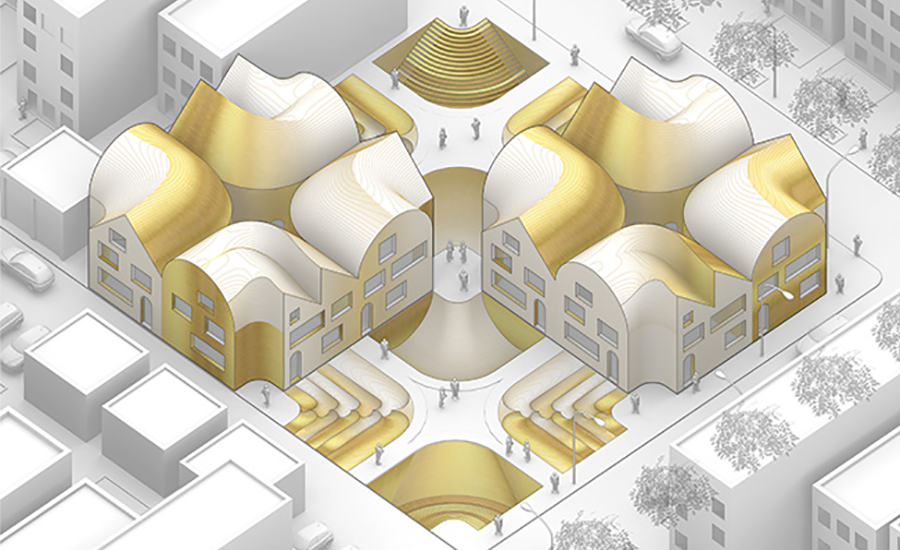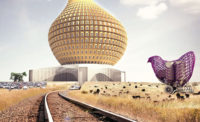Bair’s newest work, for the Chicago Biennial, flows in that same vein. Titled Cut/Fill, it reimagines multifamily housing, maximizing both urban density and public space on vacant city blocks. Her design, which creates eight housing units on a 125-foot-square Chicago lot, where a typical developer would place just five units, relies on significant excavation and uses the displaced earth to construct walls, floors, and roofs. “With both landscape and building elements,” she says, “I thought of it as being an earth-moving project as much as an architectural project.”
Next year, for the Venice Biennale, Bair will team up with Kristy Balliet, with whom she founded Possible Mediums (along with two other partners), a collaborative of Midwestern architects and educators that organizes symposia and conferences.



